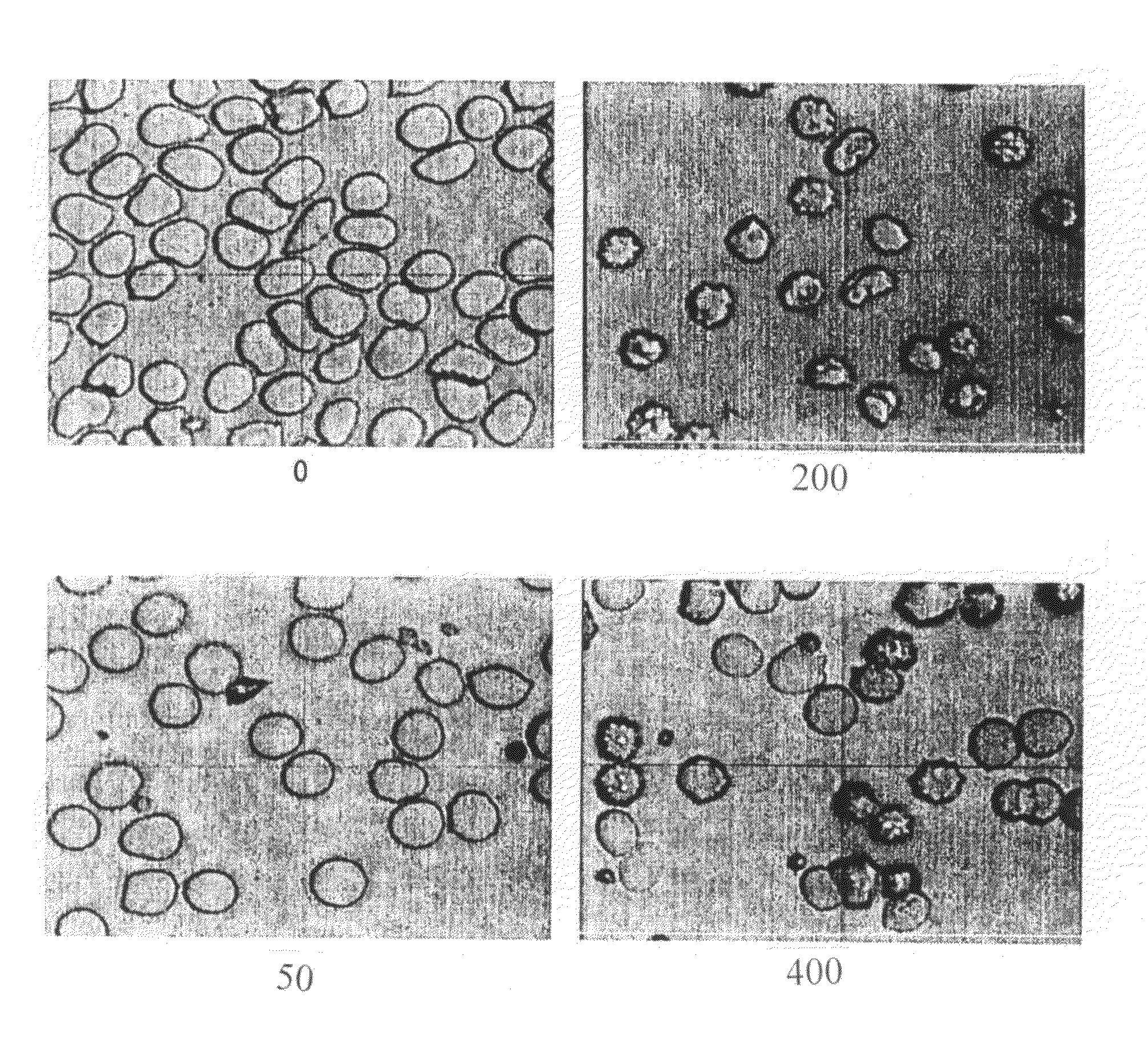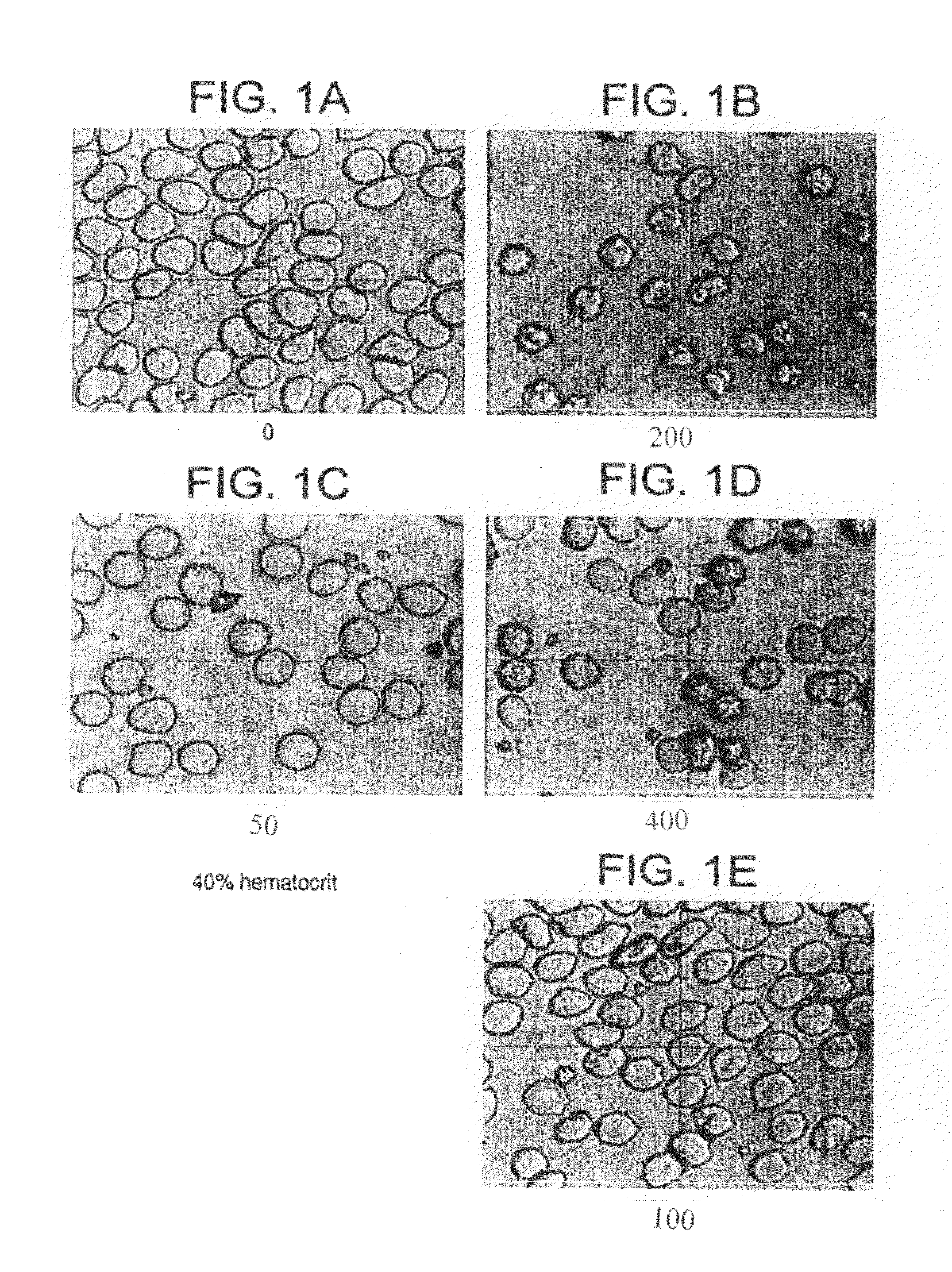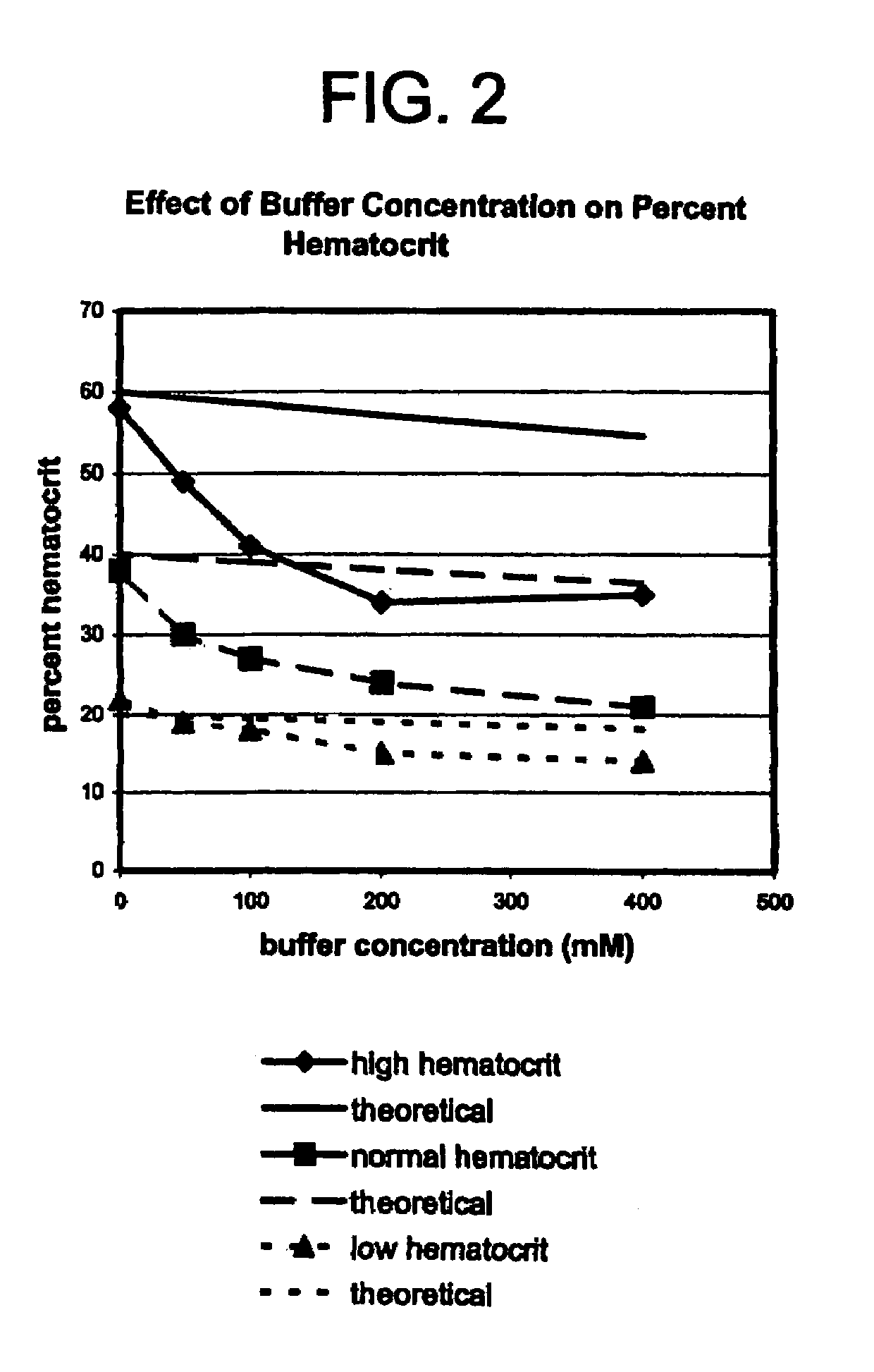Method for reducing effect of hematocrit on measurement of an analyte in whole blood
a technology of hematocrit and measurement method, which is applied in the direction of instruments, electrochemical variables, peptides, etc., can solve the problems of reducing the amount of fluid available in a sample for adequate rehydration, and interfere with accurate measurement of analyte, so as to reduce interference
- Summary
- Abstract
- Description
- Claims
- Application Information
AI Technical Summary
Benefits of technology
Problems solved by technology
Method used
Image
Examples
Embodiment Construction
[0019]In accordance with the invention, a method is provided for determination of an analyte in a sample of blood, in which method the mean cell volume of a sample of blood is reduced to diminish the interfering effects of hematocrit on the accuracy of the determination. In accordance with the inventive method, the mean cell volume of the sample is reduced by treating the sample with a nonlytic hypertonic salt composition at some point during the diagnostic procedure. The term “hypertonic salt composition” as used in this patent means a composition of any organic or inorganic salt or salts or mixtures thereof, which composition is sufficient to create in a blood sample an osmotic pressure greater than that of an isotonic fluid. The term “nonlytic” as used in this patent means that the composition will not induce substantial lysis of the red blood cells in a sample undergoing analysis by the present method.
[0020]More particularly, the method of the invention comprises the steps of (a...
PUM
| Property | Measurement | Unit |
|---|---|---|
| percent reflectance | aaaaa | aaaaa |
| pH | aaaaa | aaaaa |
| optical detection | aaaaa | aaaaa |
Abstract
Description
Claims
Application Information
 Login to View More
Login to View More - R&D
- Intellectual Property
- Life Sciences
- Materials
- Tech Scout
- Unparalleled Data Quality
- Higher Quality Content
- 60% Fewer Hallucinations
Browse by: Latest US Patents, China's latest patents, Technical Efficacy Thesaurus, Application Domain, Technology Topic, Popular Technical Reports.
© 2025 PatSnap. All rights reserved.Legal|Privacy policy|Modern Slavery Act Transparency Statement|Sitemap|About US| Contact US: help@patsnap.com



